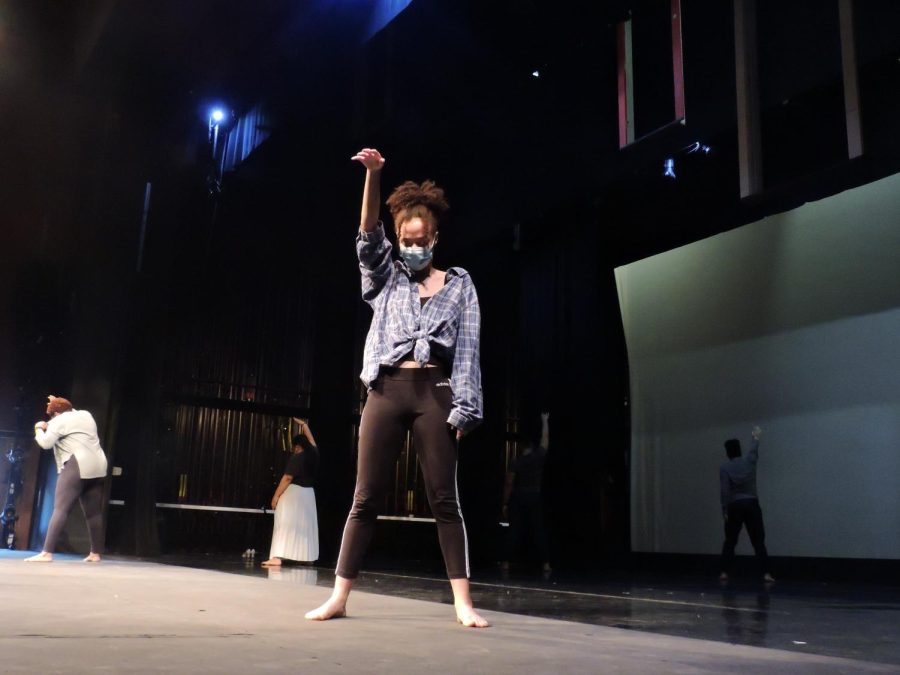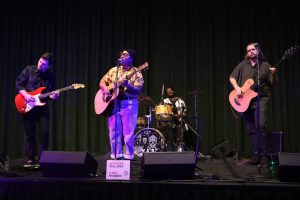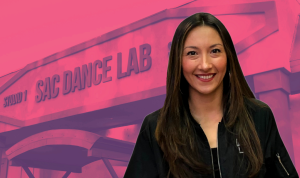PREVIEW: Sac State to host 30th annual Sacramento/Black Art of Dance show
Kima Lee, a dance major at Sac State, rehearses at the University Theater in Shasta Hall for the S/BAD performance on Feb. 13. S/BAD highlights the technique of choreographer Katherine Dunham, whom Lee said she was interested in learning more about through the production.
February 23, 2022
Intensity and passion flowed through the air as a Sacramento dance community rehearsed, the theater flooded with laughter, music, and dance.
Sacramento State is set to host a 30th anniversary performance for Sacramento/Black Art of Dance (S/BAD) in the University Theater at Shasta Hall from Feb. 23-27.
S/BAD is a dance performance that has roots in Black dance aesthetics highlighting the legacy of choreographer Katherine Dunham, according to Nicole Manker, Sac State professor and director of this year’s performance. Dunham was the creator of a dance technique that she said was meant to explore not only the movement of the dance, but the dancer as a whole.
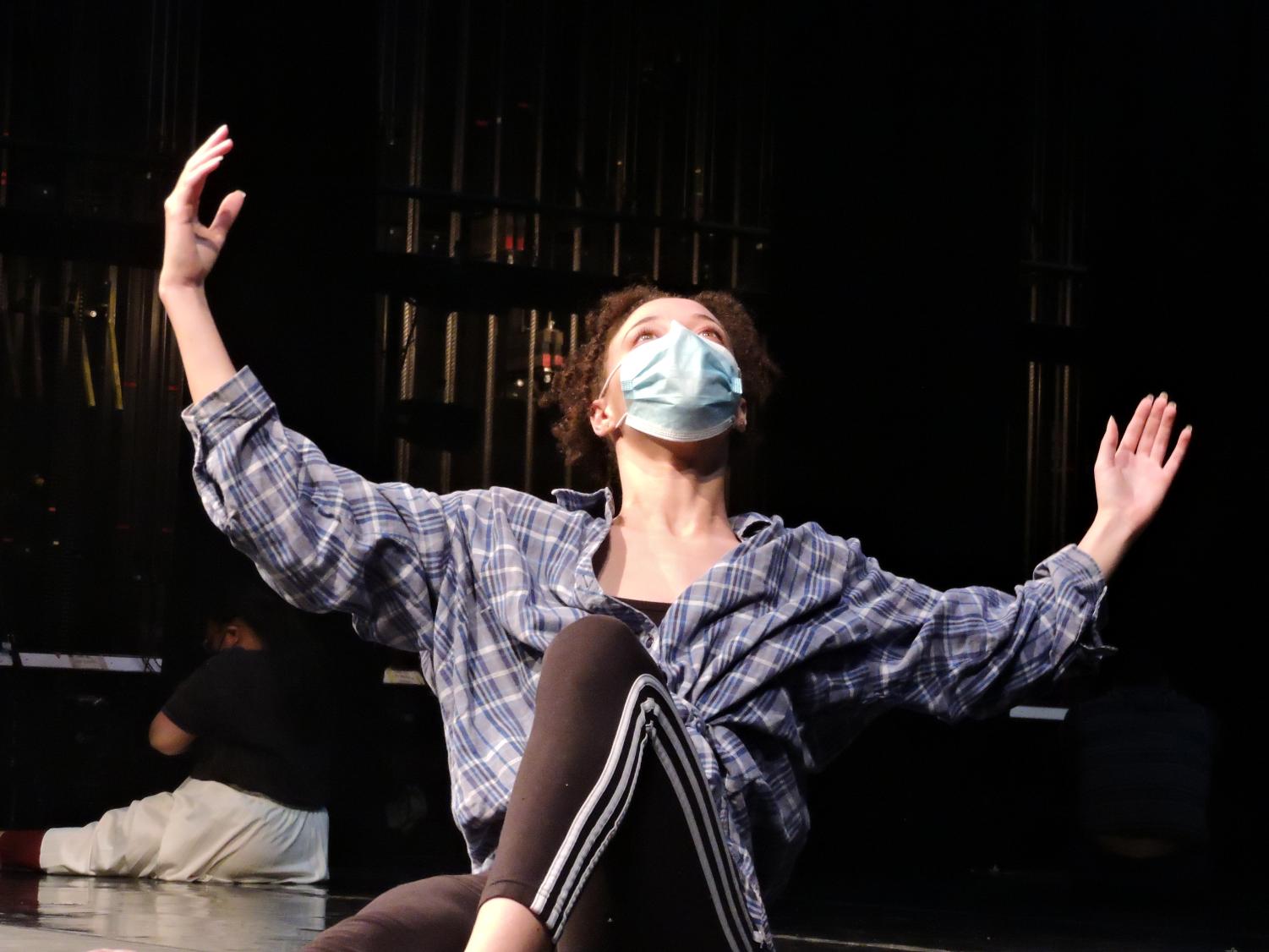
The purpose of S/BAD is to use movement as a means of storytelling, and to empower and educate others through entertainment, according to Manker, who is one of the thirty teachers in the world who are officially certified to teach Dunham’s technique.
“When Sacramento/Black Art of Dance was founded, it was based in the community,” Manker said. “There was a very strong and pretty balanced combination of community dancers and students, which drove some pretty wonderful things.”
According to Manker, S/BAD has been hosted on the Sac State campus for most of its existence and it has become a very “student heavy” production as a result.
However, in light of the 30th anniversary of the performance, Manker said she has made efforts to bring the show back toward the community to create the balance from its early years, and the preparations for the show have been intense so far.
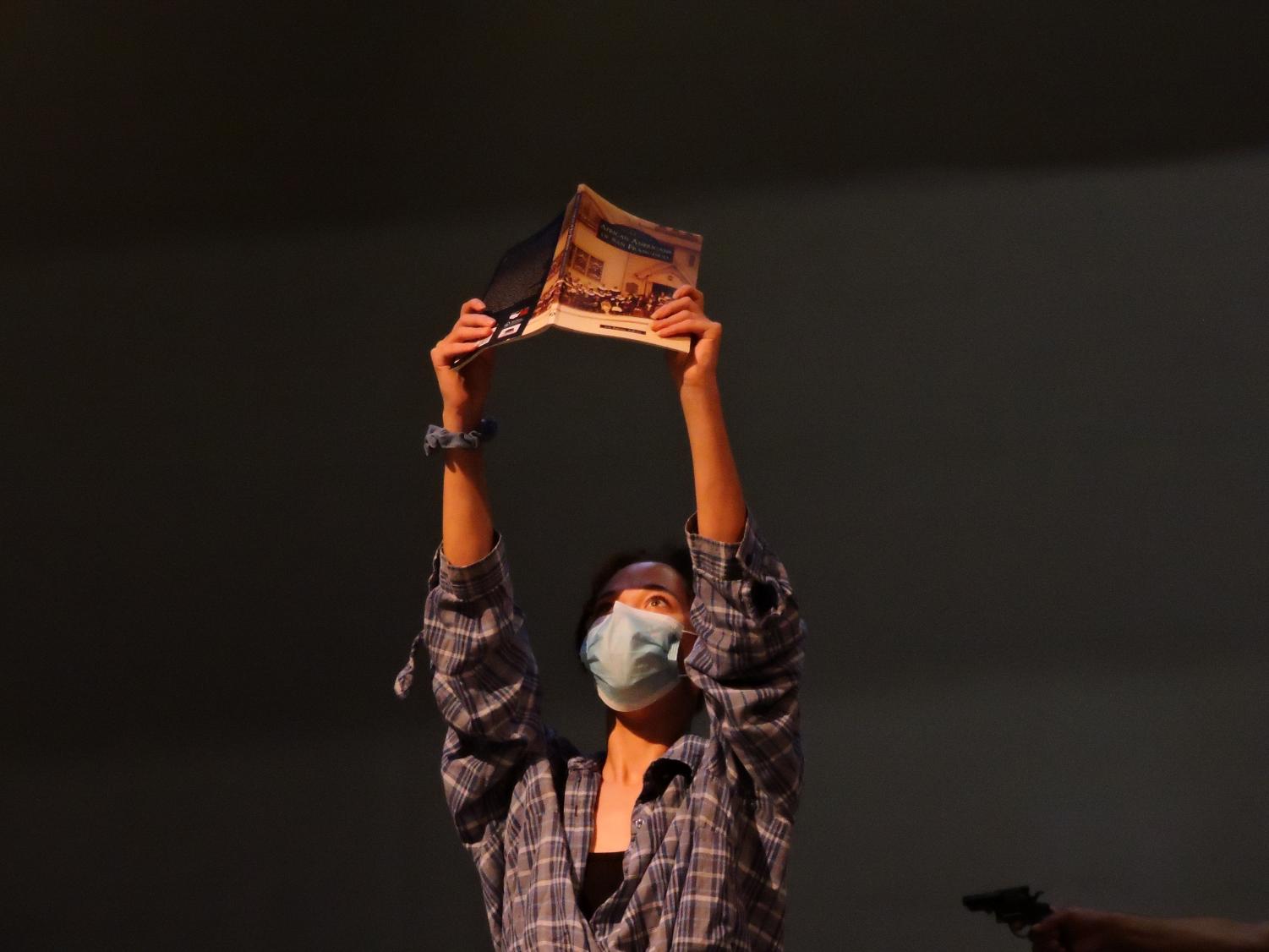
“Every time I create something, everyone who works with me has to undergo some sort of deep self-reflection,” Manker said. “I’m going to ask them some very personal questions, and I’m going to integrate their responses into the movement that I create.”
According to the performers, S/BAD is special because it gives them the chance to teach an audience about how culture connects with dance.
Kima Lee, a dance major at Sac State and performer in S/BAD, said she heard about the organization after taking an African-Caribbean dance class taught by Manker.
“I wanted to learn more about my culture and how it’s associated with dance,” Lee said. “I was also interested in learning more about Dunham’s technique.”
Drea Guinan, alumna of Sac State, said S/BAD is special to her because it showcases both students and artists throughout the Sacramento community.
“S/BAD showcases Black arts and dance, and gives representation to people who aren’t always represented in this field,” Guinan said.
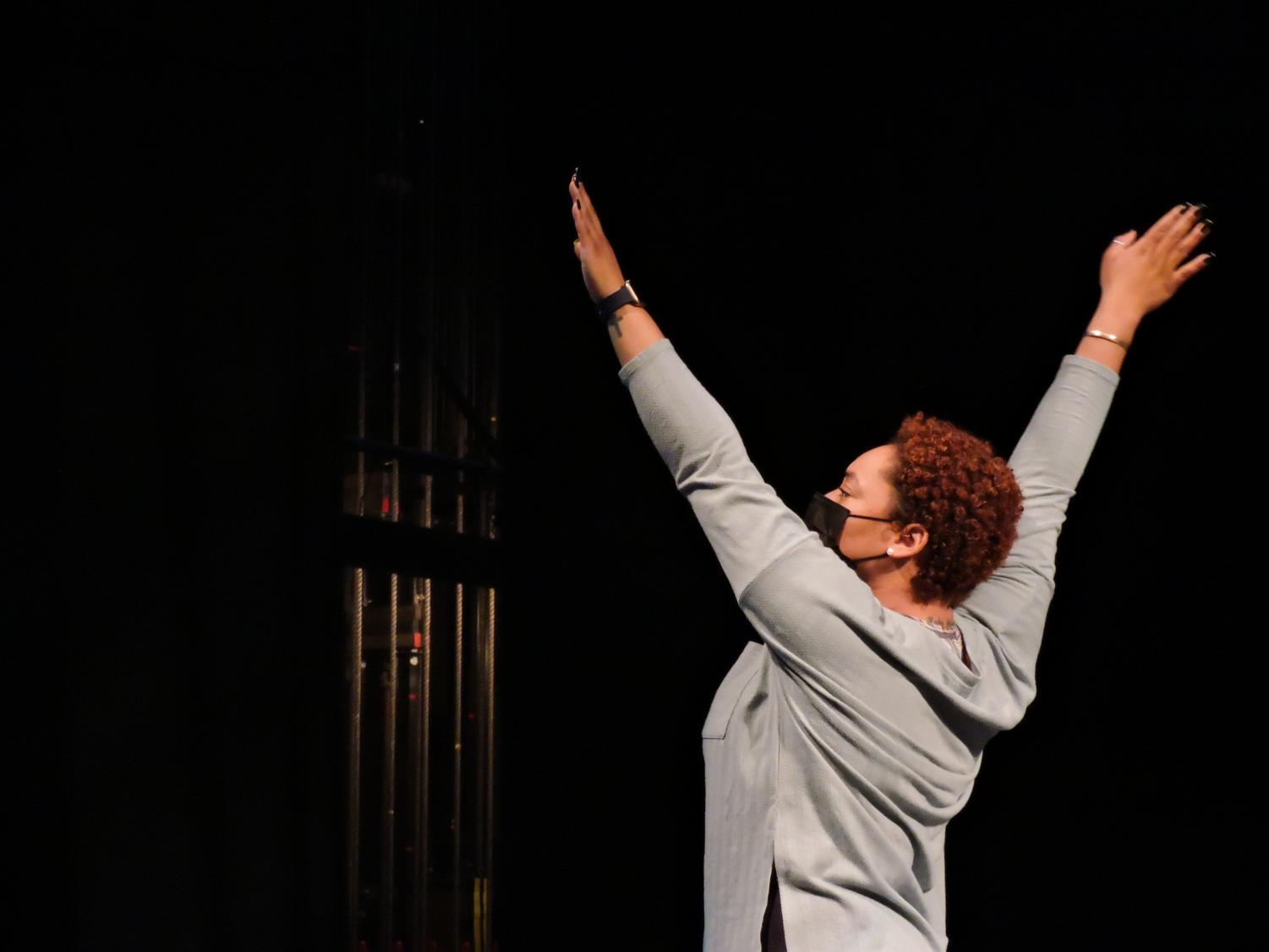
According to Sac State alumnus Miguel Forbes, S/BAD taught him how to appreciate himself as a dancer.
“[S/BAD] proved there was room for people like me in this field,” Forbes said.
Manker and the performers of S/BAD said they hope that their hard work will pay off through participation and conversation from the audience.
“These are not pieces where you just sit back and clap at the end,” Manker said. “We hope that people will come and bring their energy and be open to being moved in different ways.”


























































































































